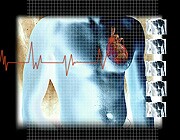In most patients, leadless cardiac pacemaker met prespecified pacing and sensing requirements
MONDAY, Aug. 31, 2015 (HealthDay News) — For patients who require permanent single-chamber ventricular pacing, an active-fixation leadless cardiac pacemaker is safe and effective, according to a study published online Aug. 30 in the New England Journal of Medicine. The study was published to coincide with the annual European Society of Cardiology Congress, held from Aug. 29 to Sept. 2 in London.
Vivek Y. Reddy, M.D., from the Icahn School of Medicine at Mount Sinai in New York City, and colleagues conducted a multicenter study to evaluate the efficacy of an active-fixation leadless cardiac pacemaker implanted in patients who required permanent single-chamber ventricular pacing.
The researchers found that the leadless pacemaker was successfully implanted in 95.8 percent of the 526 patients in the total cohort. In 90 percent of the 300 patients in the primary cohort, the intention-to-treat primary efficacy end point was met (acceptable pacing threshold and acceptable sensing amplitude through six months: P = 0.007), while the primary safety end point was met by 93.3 percent (freedom from device-related serious adverse events through six months: P < 0.001). Device-related serious adverse events occurred in 6.7 percent of patients at six months.
“The leadless cardiac pacemaker met prespecified pacing and sensing requirements in the large majority of patients,” the authors write. “Device-related serious adverse events occurred in approximately one in 15 patients.”
The study was funded by St. Jude Medical Inc., which manufactures the device. Dr. Reddy has received consulting fees from St. Jude Medical.
Abstract
Full Text
More Information
Copyright © 2015 HealthDay. All rights reserved.








